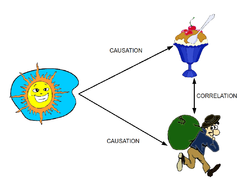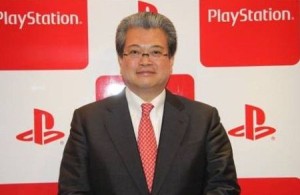SCEAsia Rising?
by Terra_Cide, HSM Editor-in-Chief
Pay attention to Home’s product releases each week, and over time you begin to see patterns emerge. The one that’s impossible to ignore right now is that SCEAsia suddenly seems to be getting a lot of content from multiple Home developers. Far more than what we’ve seen in years past.
This can’t be a coincidence. For years, SCEAsia Home has languished in the background, while the other three Home regions — Japan, North America and Europe — thundered ahead. From all reports, SCEAsia Home was a ghost town, starved for content and barely populated.
So why is there so much content suddenly being released for that region?
When trying to piece this puzzle together, it’s important to note that statistical causality and correlation are not the same thing. For instance, a sudden upswing in active users would not be the cause for this increase in content, because a rise in users is something which correlates to an increase in content. No one goes to an amusement park unless the park has attractions to offer.
 You could suggest that SCEAsia region might offer a more financially lucrative revenue split, but that also isn’t a causal effect; even if it were the case (and for all we know, it could be), it’s still a much smaller consumer base. No, the answer is elsewhere.
You could suggest that SCEAsia region might offer a more financially lucrative revenue split, but that also isn’t a causal effect; even if it were the case (and for all we know, it could be), it’s still a much smaller consumer base. No, the answer is elsewhere.
One of the first rules of economics — oft-repeated in this publication — is that human beings respond to economic incentive. And third-party content developers are no exception to this. So the logical answer is that SCEAsia, as a region, must have lowered its entry barriers to the point where there’s little (if any) economic disadvantage to submitting content — either new content that’s been developed for other regions concurrently, or existing content repackaged for the Asia marketplace.
As a reminder: Home, like Sony itself, is not one homogenized entity. Each Home region belongs to a completely separate business. SCEA, for instance, is a different animal than SCEE. Different companies, different people, different business practices and legal requirements. There are years of accumulated stories about developers creating content for both regions, all offering circumstantial tidbits which paint a very complex picture. So now, if we include SCEAsia into the mix, that’s another set of hoops to jump through — and no one’s going to go to all that extra work unless they think they stand more to gain than they do to spend.
(You could at this juncture ask why I don’t simply inquire with Norse, since he’s now LOOT’s production coordinator and thus likely handles this exact sort of stuff on a daily basis. The answer is because HSM respects this little thing called confidentiality. As Stephen Covey once wrote, businesses move at the speed of trust — and HomeStation built its reputation on being airtight trustworthy. So I have no idea what he’s working on, and he has no idea what I know about what everyone else in Home is doing. Frankly, we have far more personal things we talk about when we can steal some time away together.)
Here’s the real question, then: what hurdles were lowered or removed that made it so much easier for Home’s third-party developers to suddenly flood SCEAsia with badly-needed content?
My guess? Translations.
Think about it. Everything that goes into Home has a name and a description, and these things have to be translated — just as you would localize any other video game. And localization ain’t necessarily cheap, particularly if you have to translate something into multiple languages. We’ve heard over the years that SCE Japan requires all Home content to be localized in Japanese — and since Japan is the only PSN country which requires you to create your account in Japanese, that frankly wouldn’t be surprising if it’s true — that by itself may be a major deterrent. Is it possible that SCEAsia no longer requires developers to localize their content for Asian languages? Perhaps they themselves are providing that service now.
Another possibility is QA. One of the repeated rumblings we’ve heard over the years is that the Asian QA process — at least for Japan Home — is considerably longer and more arduous than SCEA Home or SCEE Home. Given how few people use SCEAsia Home, perhaps their regional QA is now being handled by SCEA or SCEE instead of Japan. This would make sense, since it seems a lot of content being released in SCEAsia are simply re-releases of content which already went live in other regions some time ago.
I have no idea if I’m right or wrong about any of this. I could be completely off the mark. But for so many of Home’s third-party developers to suddenly start creating (or repackaging) their content for this region, which had hitherto been all but ignored, it strongly implies that whatever barriers were in place have been lowered to the point where developers can now look at SCEAsia Home as, at the very least, a small amount of incremental revenue gain for not much extra work.
Will this new trend continue? Will Asia finally catch up to its sister Home regions? Ultimately, I suspect that depends on sales numbers and the ability for the region to attract new users now that there’s content for them to enjoy. So ultimately it’s up to SCEAsia to make its case. We’ll know soon enough whether or not it was worth it, simply by observing whether the flow of content continues or dries up.
Hopefully, it works out for all parties involved.
Share
| Tweet |




 Twitter
Twitter
Nice read; though I believe KONAMI will disagree with you; they have yet refused to release any stuff to us Asians not bcos of hurdle but for personal sickening reasons.
You’ll note that this article focused on North American and European developers, of which Konami is neither. And let’s be frank here -- personal bias (including the perception thereof) in business is silly.
If I were a SCEAsia Home user, I wouldn’t be so focused on which developers *aren’t* bringing their items there, but instead focusing on supporting the developers who *are* bringing their items there, and making the numbers on their income statement for that region worth their efforts, if I wanted any chance of seeing more items (and possibly more developers) entering the market.
Asia did change their policy to remove the requirement that things be translated into 3 types of Chinese and South Korean. Developers can now submit items as English Only. Which means anyone who is approved to submit items to them has less of a language requirement for Asia than for North America. I have even seen items kicked back for not translating American English into British English -- color vs colour.
For some of us, the issue is not desire but getting through the system. I could conjecture as to why we are not getting through to SCEAsia (or SCEE as well), but it would be a guess. My feeling is that once we have a killer item, things will change. Until then, we just send emails and hope.
Wow! 4 asian (tonal)languages… I can understand it as being a difficulty…
Surprising this little colour vs color thing. You would not beleive the thing I read from computer translated french. I would not name some higly rated dev that are really bad at it. But Lockwood and Hellfire are among the best. No recollection of Game mechanics… so it must be ok
I was surprised how much the french ( from France) really didn’t cared about bad translation. Here in Québec (Canadian french speaking province) it is a very important and touchy matter.
I would suggest to any company to be respectfull of their intended customers. Translation is one thing, doing it right is another.
As a developer, you have to pay for the translations which adds to the cost to create the item. Asia is a much smaller market than the US. And French Canadian is smaller than Asia. So translation cost versus payback is really not worth it. We have paid for translation and done some Google Translate. It all depends.
It isn’t that we don’t care. How much would you pay for better translation to sell 2 more of an item where it sells for 0.99? As soon as it is more than $2, you have lost money. And some items we created have sold less than 2 in all of Canada, let alone in just Quebec.
It is honestly not a respect issue. It is an attempt to make money in the Home market, which is hard.
Well the numbers (2!) you are giving tells a lot about how Home is nt the money making machine some think. I understand the cost of translation (Thats why I said “WOW” about the former Asian requirements) Again, I havent seen anything worth reporting from you guys so kudos to that. Only thing I wanted to say is it’s better to have a clumsy “inside” translation than blindly use a computer translator wich dont make sense most of the time. Again (again? lol) You did MUCH better than bigger dev or Sony on Home.
Back on topic.. Yes, given all this, technically and “economically” going in Asia. A country with something like 20 different language must be a real pain, esspecially for a small company.
More regions = more headaches, especially in the world of console development. Different countries have different rules, and following those rules costs time/money. Home developers have claimed that it’s not profitable to release content in the Asia region (that doesn’t include Japan).